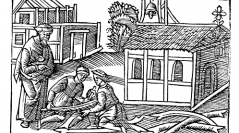

 Anthropozoologica
53 (14) - Pages 159-174
Anthropozoologica
53 (14) - Pages 159-174Even if it played a part, it is not so much the lesser availability of elephant ivory as the Norse expansion in the Northern Atlantic that brought the success of walrus ivory throughout Western Europe and far beyond. The strength of demand did not only bring the extinction of the species in Iceland, but it was also, most probably, one of the main drivers of the sustained Norse settlement of Greenland. Maybe for the first time, at least for such an important luxury production, the division between the places the commodity was gathered and those it was processed is complete. The main workshops were in Norway, mostly in Trondheim, but also in Germany, in England, long after the end of the Danelaw, and even in France and in Castila. Raw tusks were traded, but also carved ivories, which sometimes went back to the initial collection point. Another ivory exported from the Arctic seas, narwhal teeth are even more problematic. The Greenland Norse probably never were in contact with the live sea mammal, but would find its inidentifiable body, or fragments of it, on the shore, after the animals had been eaten by killer whales.
Ivory, walrus, narwhal, unicorn, Greenland, Iceland, khutū, trade, Middle Ages.